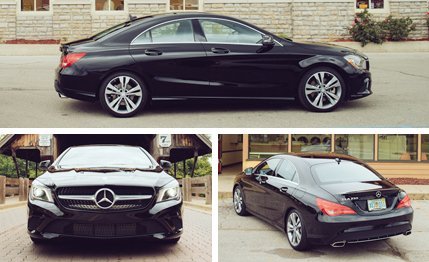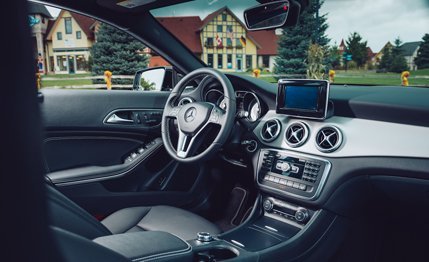
 Instrumented Test
Instrumented Test
It’s been nearly 500 years since the passage of the Reinheitsgebot, the “German Beer Purity Law” decreeing that beer shall be made from only three ingredients: water, barley, and hops. (And yeast, of course, though its contribution to the fermentation process wouldn’t be understood until a few centuries later.) The letter of the land until 1988, it holds considerable sway over brewers even today, a testament to the country’s mania for integrity and tradition. It’s this same sort of obsessive attention to detail that we so often admire in German luxury sedans, at least the ones we find as satisfying as a stein of authentic lager.
This newest four-door from the fatherland, the Mercedes-Benz CLA, comes off more like Bud Light in comparison. Indeed, the CLA is a potion pitched at mainstream America, a less intoxicating—and less costly—take on the company’s “four-door coupe” trope. Its MSRP starts at just $29,900 before the $925 destination charge. While this is important for landing it on those “Best Cars Under $30,000” slide shows that pass for shopping advice on the web, that’s nearly six grand less than the price of the C-class, the car that’s spent the last two decades serving as the Mercedes of choice for Americans who can’t really afford one.

 The CLA250s comely interior design is let down by a few chintzy pieces.
The CLA250s comely interior design is let down by a few chintzy pieces.
Not surprisingly, then, a base CLA is a few longnecks short of a case. Options include equipment that might be taken for granted on something with a three-pointed star in its grille: leather ($1500), a sunroof ($1480), and heated seats ($580). Yes, you will be upsold. Our test car was ordered with the $2200 Premium package, which seems unlikely to be left off any car destined for a dealer lot and includes an iPod connector, garage-door opener, compass, auto-dimming mirrors, satellite radio, dual-zone climate control, a Harman/Kardon-branded sound system, and heated seats. Gotta have that compass. A loaded CLA does include trickle-down tech like adaptive cruise control (bundled with other assistance features in a $2500 package) and automated parallel parking ($970), but it stickers for more than $45,000.
Visually, the CLA is the most interesting thing to come out of Stuttgart in a decade. The refreshing lack of straight, formal lines gives the car a distinct identity, rather than the look of a smaller progeny. Sitting still, the CLA looks like an arrow that has just left the bowstring, styling that should hit the target market the way William Tell split his apple. The CLA’s convex curves and droopy fascias aren’t new ideas, but they all work better here than on similarly styled products from BMW and Volkswagen, or even the Mercedes CLS that served as inspiration. Those who say these sorts of lines demand a larger canvas, like the new S-class, or grouse about the CLA’s tall hood and stubby ends are as wrong as nonalcoholic beer.


The CLA is the first front-drive Mercedes to appear in the American market. (A four-wheel-drive CLA will be available in early 2014.) As it turns out, this move from rear-drive is not the worst affront to tradition. The transversely mounted, turbocharged 2.0-liter four-cylinder is well matched to the car, its 208 horses enough to do the zero-to-60-mph chug in 6.3 seconds. The sole transmission, a seven-speed dual-clutch automatic, shifts smoothly in standard mode, keeps the direct-injected engine ticking and buzzing along at higher revs in sport, and offers a manual mode for deploying the paddle shifters.
The CLA exhibits no trace of torque steer unless you really hammer it mid-turn, in which case it will overwhelm the front tires, even if they’re the optional summer performance Goodyear Eagle F1 Asymmetric 2s on 18-inch wheels ($500). The subsequent stability-control intervention is more of an event here than it is in a rear-drive Mercedes, but the CLA is a good handler overall, pulling 0.90 g on our skidpad. It also stops well, decelerating from 70 mph in 160 feet.